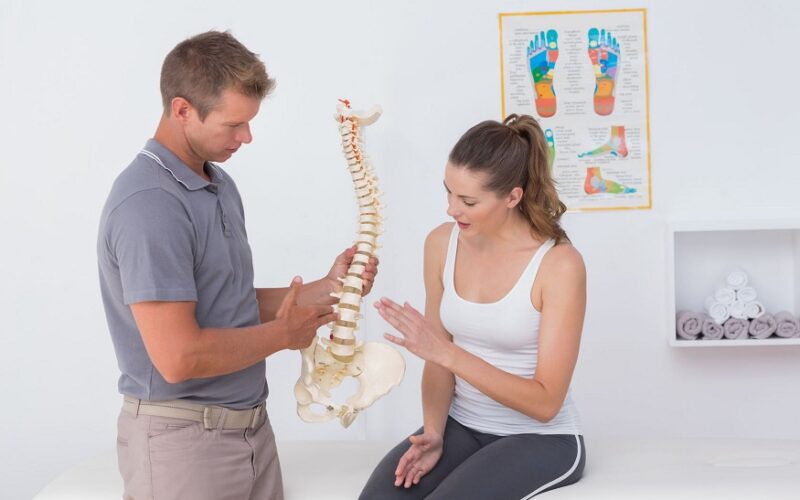Discs are the padding in your spine that acts as shock absorbers and prevents vertebrae from grinding against each other. Discs are made of cartilage. The exterior layer of discs is stiff cartilage, whereas the inner is softer. Your spinal discs degrade over time, and an injury can cause a disc to bulge or slip. In addition, the cartilage might stiffen and dry, providing less cushion and narrowing the space between your vertebrae. If the space between the vertebrae narrows, you may feel discomfort, stiffness, or a loss of range of motion in the region.
Depending on the circumstances, your disc can become bulged or slipped. Below, we will explore the differences between the two and examine how chiropractic treatments can alleviate the symptoms.
Bulging Disc
A bulging disc happens when the outer layer of your disc is squeezed, causing the disc to flatten. The entire disc does not have to be touched, but the bulge should be reasonably uniform across the disc. While a bulging disc can cause injury, decompression tactics from chiropractic therapy can lessen discomfort and inflammation in the area.
Slipped Disc
Slipped discs are not the same as bulging discs. When you have a slipped disc, the outer solid layer of cartilage is damaged, and the inner layer protrudes from the rip. Your doctor may also refer to a slipped disc as a ruptured or herniated disc. It indicates that the outer layer of your disc has been damaged, and you are more prone to discomfort. In addition, slipped discs are more likely than bulging discs to reach nerve ends, resulting in nerve discomfort that can be difficult to cure.
Chiropractic Treatment for Disc Issues
Chiropractic treatment examines the entire function of your spine to identify what can be done about out-of-place parts. Working with a chiropractor can provide pain relief, but it is critical that you work with your chiropractor frequently. Chiropractic therapy begins with a thorough examination of what is causing your pain, stiffness, or inflammation in your spine. Next, your chiropractor will examine any imaging done on your spine to determine the condition of your discs. Once the problem areas have been identified, your chiropractor will develop a treatment plan to address them.
Bulging and Slipped Disc Treatment
If you are experiencing discomfort due to a slipped or bulging disc, chiropractic therapy may relieve some of the strain on your disc. Stretching and traction are two decompression techniques that free up the space between your vertebrae. To keep your spine in alignment, some strengthening exercises will be recommended. You may feel better after only one session, but it is critical to continue seeing your chiropractor if you have a bulging or ruptured disc.
Chiropractic therapy is a safe, all-natural technique to alleviate pain, stiffness, and swelling caused by a slipped or bulging disc. If you have been informed that surgery is your only choice, consult with a chiropractor first. You could realise that you can reduce your discomfort and start moving about more easily again. Some patients can postpone their need for surgery, while others can skip it entirely.

